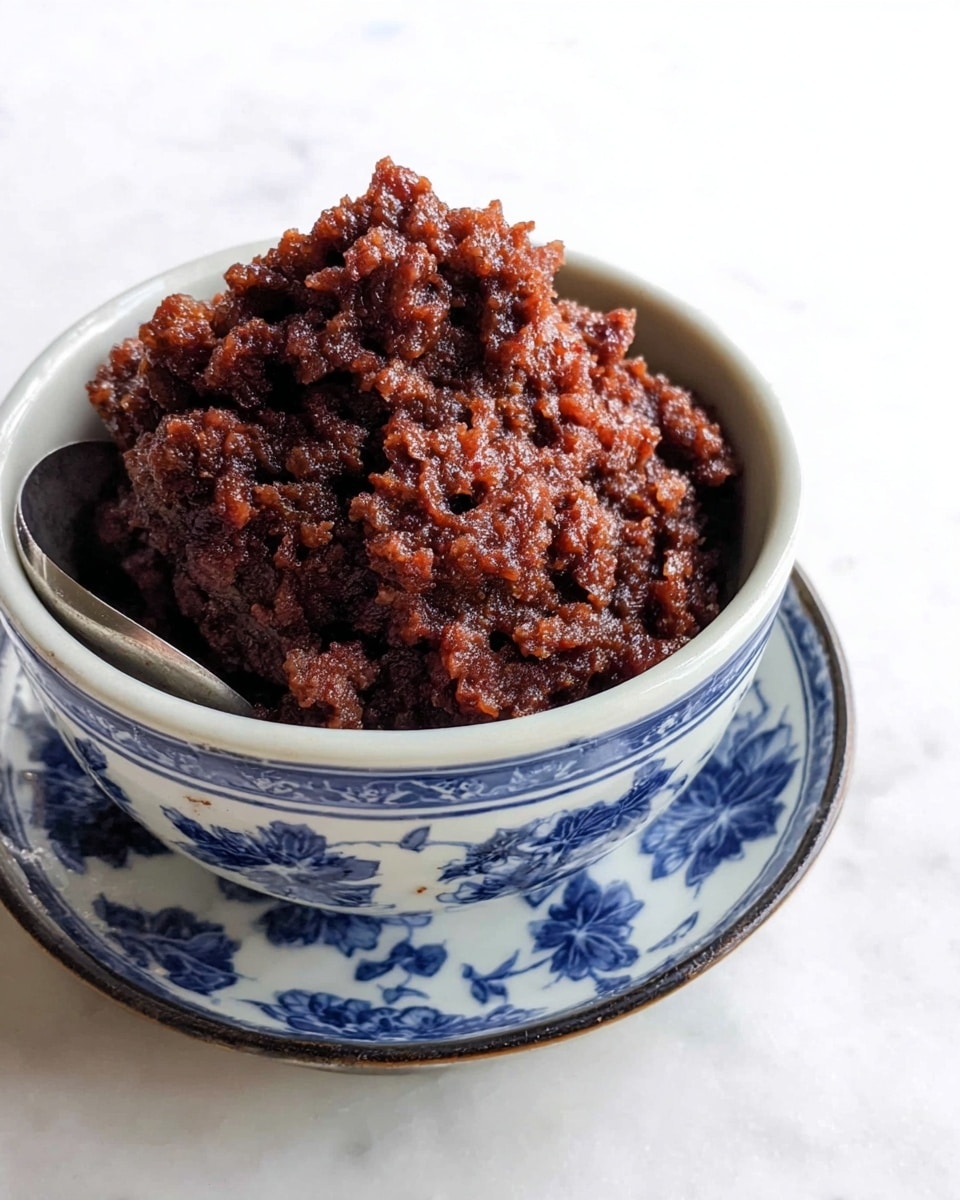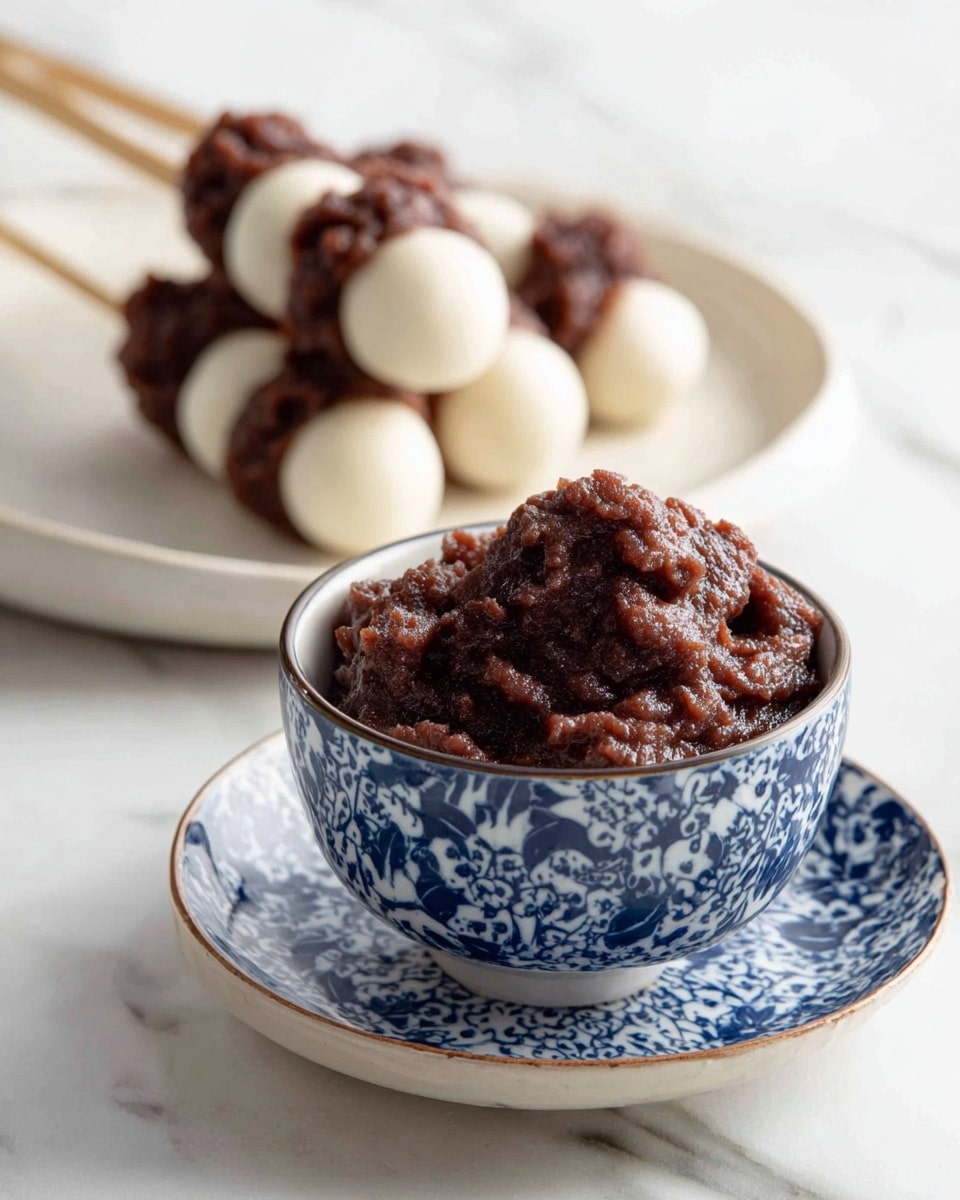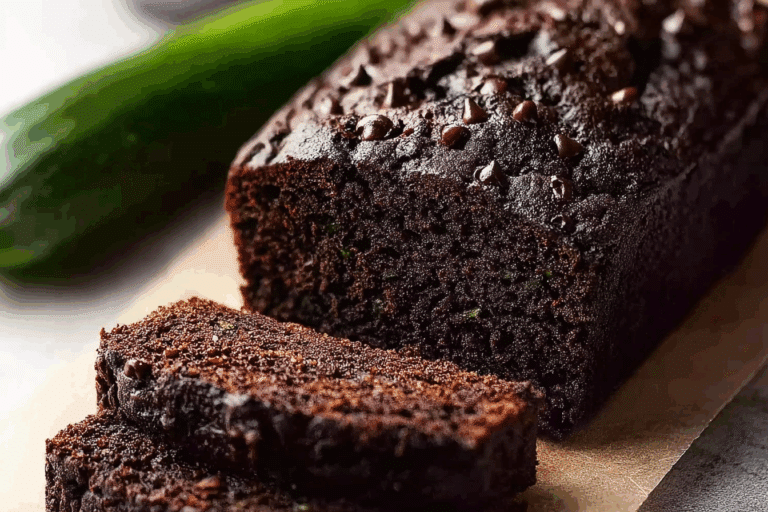Anko Recipe – Japanese Sweet Red Bean Paste Recipe
There’s something truly comforting about homemade Anko, that luscious Japanese sweet red bean paste that feels both simple and special. This Anko Recipe – Japanese Sweet Red Bean Paste Recipe is one I come back to whenever I want a touch of authentic sweetness with a cozy texture that you just can’t quite get from store-bought versions. Whether you’re looking to elevate your mochi, dorayaki, or even toast, making this from scratch is surprisingly easy and rewarding.
What I love most about this Anko Recipe – Japanese Sweet Red Bean Paste Recipe is how versatile it is—it works beautifully as a dessert filling or just a spoonful with tea, and it brings such warmth and nostalgia if you’ve ever visited Japan or tried Japanese sweets. Once you get the hang of it, you’ll see how the simple combination of azuki beans, sugar, and a pinch of salt can transform into something magical. Trust me, it’s worth the effort—you’ll enjoy making it as much as eating it!
Ingredients You’ll Need
These ingredients are straightforward, but each plays an important role in getting the perfect balance of sweetness and bean flavor. When you shop, try to find good-quality azuki beans—they really make a difference!
- Azuki beans: These small red beans are the star of the show. Look for dry azuki beans in Asian grocery stores or online for the freshest paste.
- Sugar: Regular granulated sugar works great; adjust sweetness to your taste if you like a less sweet paste.
- Salt: Just a pinch enhances the natural sweetness of the beans without overpowering them.
- Boiling water: Used to soak and cook the beans gently; makes the beans tender without mushiness.
- Water: For cooking the beans after soaking; patience here pays off.
Variations
I like to experiment a bit with my Anko, depending on what I’m pairing it with. Don’t be afraid to tweak it to suit your tastes or dietary needs—it’s easy to customize!
- Less sweet Anko: I sometimes cut back the sugar by a third when I plan to use the paste in tea sweets or as a toast spread.
- Chunky vs. smooth: For desserts like dorayaki, I prefer a chunky texture, so I mash just half the beans. For smoother fillings, blend it after cooking.
- Vegan-friendly: This recipe is naturally vegan—perfect if you’re avoiding animal products.
- Flavored variations: Occasionally, I add a splash of vanilla extract or a little yuzu zest for an interesting twist.
How to Make Anko Recipe – Japanese Sweet Red Bean Paste Recipe
Step 1: Soak the Azuki Beans
Start by rinsing your azuki beans under cold water until the water runs clear. This helps remove any dust or debris. Then, place the beans in a large bowl and cover them with boiling water—about 1 cm above the beans. Let them soak for about an hour. This soaking step is crucial for softening the beans evenly without overcooking later on. While this happens, you can prep your sugar and salt!
Step 2: Simmer the Beans Slowly
After soaking, drain the beans and transfer them to a pot. Add fresh water—about 5 cups—and bring to a boil over medium-high heat. Once boiling, reduce to a gentle simmer, covering the pot but leaving a small gap for steam to escape. Cook for about 60-90 minutes, stirring occasionally and adding water if needed so the beans stay submerged. You want the beans soft enough to easily mash but not falling apart into mush. Check by squeezing a bean between your fingers.
Step 3: Sweeten and Mash
When the beans are perfectly tender, drain any excess water, then return the pot to low heat. Add the sugar and a pinch of salt, stirring gently but constantly to dissolve and thicken the paste. I like stirring with a wooden spoon, mashing the beans as I go to your preferred texture. This step is where the magic happens—be patient and keep the heat low to avoid burning. After about 10 minutes, taste and adjust sweetness if needed.
Step 4: Cool and Store
Once your Anko has thickened and tastes just right, transfer it to a clean bowl and let it cool to room temperature. It will thicken slightly more as it cools. Store leftovers in an airtight container in the fridge for up to a week. Making your own Anko feels so rewarding—like you’ve captured a little bit of Japanese tradition right in your kitchen.
How to Serve Anko Recipe – Japanese Sweet Red Bean Paste Recipe

Garnishes
I love topping Anko with a sprinkle of toasted sesame seeds or a light dusting of kinako (roasted soybean flour) for a little extra nutty flavor and texture contrast. It’s simple but adds depth. Sometimes, a tiny pinch of flaky sea salt on top works magic, especially if you’re making it for toast or pancakes.
Side Dishes
Traditionally, Anko is paired with mochi, steamed buns, or desserts like dorayaki pancakes. I personally enjoy it alongside green tea or matcha-flavored sweets, since the earthiness of the tea balances the sweetness perfectly. For a cozy snack, spread it on buttered toast with sliced bananas—it’s a little fusion twist I swear by!
Creative Ways to Present
For special occasions, I like shaping Anko into small balls or placing dollops on delicate rice crackers for an elegant appetizer. You can also swirl it into whipped cream or yogurt for a fancy layered dessert. The smooth, ruby-red paste is so pretty and tastes fantastic no matter how you serve it.
Make Ahead and Storage
Storing Leftovers
I keep my Anko in a glass container with a tight lid inside the fridge. It stays fresh for about a week, and I find the flavors even deepen a bit after a day or two. Just give it a quick stir before using it again.
Freezing
Freezing works surprisingly well! I spoon Anko into small, flat containers or freezer bags, pressing out the air to avoid freezer burn. When I’m ready to use it, thaw in the fridge overnight—it keeps the texture and flavor intact without much effort.
Reheating
When reheating (especially after freezing), I gently warm the Anko in a small saucepan over low heat with a splash of water to loosen it up, stirring frequently. This helps avoid scorching and brings it back to that perfect spreadable consistency.
FAQs
-
What is Anko, and why is it so popular in Japanese cuisine?
Anko is a sweet red bean paste made from azuki beans, sugar, and a pinch of salt. It’s popular in Japanese cuisine because it’s incredibly versatile, used in countless traditional sweets like mochi, taiyaki, and dorayaki. Its natural sweetness and creamy texture pair well with many flavors, making it a staple ingredient in Japanese desserts.
-
Can I make Anko without soaking the beans overnight?
While some recipes suggest soaking azuki beans overnight, this Anko Recipe – Japanese Sweet Red Bean Paste Recipe uses boiling water soaking for about an hour, which softens the beans enough for simmering without an overnight wait. This method saves time but still results in tender beans perfect for making Anko.
-
How sweet is homemade Anko compared to store-bought versions?
Homemade Anko is often less sweet than many commercial versions, giving you control over the sugar level. You can adjust the sweetness to your liking during cooking, making it perfect if you prefer a more natural, balanced flavor without overly intense sugar.
-
What texture should I aim for when making Anko?
Texture depends on your preference and how you plan to use it. For fillings like dorayaki, a chunkier texture with some whole beans works well. For smoother applications, you can mash or blend the paste until creamy. This recipe allows flexibility, so try both until you find your favorite.
-
Can I use canned azuki beans to make Anko?
You can use canned azuki beans, but homemade Anko made from dry beans often has a fresher, more complex flavor and better texture. Canned beans may have added salt or preservatives, which can affect the taste, and the paste may become too soft or watery without proper adjustment.
Final Thoughts
Making this Anko Recipe – Japanese Sweet Red Bean Paste Recipe at home always feels like a little moment of connection—to tradition, to comfort food, and to something delightfully handmade. It’s one of those recipes you can enjoy time and time again, finding new ways to serve it and personalize it. I hope you give it a go—you might just find yourself hooked, like I am, on the warm, sweet goodness of homemade Anko.
PrintAnko Recipe – Japanese Sweet Red Bean Paste Recipe
Anko is a traditional Japanese sweet red bean paste made from azuki beans, sugar, and a pinch of salt. This versatile paste is used in various Japanese confections like mochi, dorayaki, and taiyaki, offering a smooth, sweet, and slightly earthy flavor. Making anko from scratch involves boiling and simmering azuki beans until soft, then sweetening and mashing them to the desired consistency.
- Prep Time: 8 hours (includes soaking time)
- Cook Time: 1 hour 45 minutes
- Total Time: 9 hours 45 minutes
- Yield: About 2 cups of anko
- Category: Dessert
- Method: Stovetop
- Cuisine: Japanese
- Diet: Vegetarian
Ingredients
Ingredients
- 1 cup azuki beans (200g / 7oz)
- 1 cup sugar (200g / 7oz)
- 1 pinch salt
- Boiling water, enough to cover the beans 1 cm (1/2 inch) above the top
- 5 cups water
Instructions
- Rinse and Soak Beans: Rinse 1 cup of azuki beans under cold running water to clean them. Soak the beans in water for several hours or overnight to help soften them and reduce cooking time.
- Boil the Beans: Drain the soaked beans and place them in a pot with 5 cups of fresh water. Bring the water to a boil over medium-high heat, then reduce to a simmer and cook for around 5 minutes.
- Drain and Rinse: Drain the beans and rinse them with boiling water to remove any bitterness. This essential step helps improve the flavor of the anko.
- Simmer until Soft: Return the beans to the pot and add enough boiling water to cover them about 1 cm (1/2 inch) above the beans. Simmer gently over low heat for about 1 to 1.5 hours until the beans are very soft and breaking apart, adding more water if necessary to prevent drying out.
- Add Sugar and Salt: Once the beans are soft, add 1 cup of sugar and a pinch of salt to the pot. Stir to dissolve the sugar completely and continue cooking over low heat for 10 to 15 minutes until the mixture thickens to a paste-like consistency.
- Mash the Beans: Using a wooden spoon or a potato masher, mash the beans to your preferred texture. For smooth anko, mash thoroughly; for a chunkier texture, leave some whole beans intact.
- Cool and Store: Remove from heat and let the anko cool completely. Transfer it to a clean container and store in the refrigerator for up to a week or freeze for longer storage.
Notes
- Soaking beans overnight eliminates excess starch and reduces cooking time.
- Rinsing beans after initial boiling removes bitterness from the azuki bean skins for a cleaner flavor.
- You can adjust the sugar amount based on your preferred sweetness.
- For smooth anko, you can blend or pass the paste through a fine sieve after mashing.
- Anko can be refrigerated for up to 7 days or frozen for up to 3 months.
- Use a heavy-bottomed pot to prevent beans from sticking and burning.








